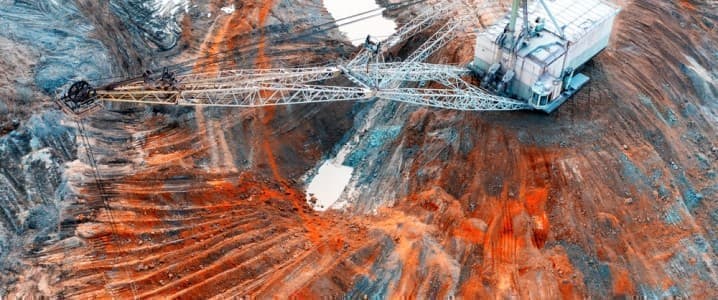Via AG Metal Miner
The Rare Earths MMI (Monthly Metals Index) saw little change month-on-month. Overall, the index continued its sideways trend, dropping a slight 2.5%. Rare earth carbonate saw the largest price shift between June 1 and July 1, dipping 10.59%. Still, as a whole, the index continues to trend in stark difference to the sharp price drops seen between February 1 and May 1.
U.S. Rare Earth Production Catching Up with China
The cost of rare earth metals increased slightly between June 1 and July 1, 2023. Analysts attribute this price increase to a variety of factors, including the ongoing trade war between the U.S. and China. According to Reuters, the Pentagon is trying to track the US’ rare earth output amid the current trade disputes. Meanwhile, the slight rise in RE metal prices accompanied a fall in the prices of other metals. For example, Shanghai tin prices declined for the sixth day in a row on Wednesday, July 2, as investors increased their short positions in the metal.
This shows that investors now see rare earth metals as a more enticing investment. Indeed, REM prices continue to rise because they see use in such a wide range of sectors, including electronics, defense, and renewable energy. This also means that any disruption in the RE metal supply could have major ramifications for these industries, which we’ve already begun to witness.
The US continues to minimize its reliance on China and has increased attempts to revitalize its own rare-earth industry. However, experts believe there are two major vulnerabilities hindering the US. The first is overcoming China’s economies of scale, while the latter relies on the U.S.’s ability to close a widening competence gap.
China dramatically increased its mining efforts in the 1980s and 1990s. This overwhelmed the market with low-cost rare earth elements and forced mines around the world out of business. Success in the rare earth industry depends on whether the US can quickly scale up processing and refining after mining the resources.
Semiconductor Supplies Could Experience Further Strain
With the rare earth battle between China and the U.S in full swing, the semiconductor shortage problem experienced another blow this past week. China implemented an export ban on germanium and gallium exports, two metals commonly used in semiconductor manufacturing. While the two metals don’t fall under the category of rare earth metals themselves, the ban could have a significant ripple effect on the technology industry.
The new ban, which take effect on August 1, require companies to obtain approval to export certain gallium and germanium compounds. The move is just another part of an escalating global fight for technical supremacy, with the U.S. and Europe on one side and China on the other. AXT, a US company that manufactures gallium and germanium substrate goods in China, requested permission to continue exporting these products. The company is also working to minimize any potential inconvenience to its clients
The restrictions come just as the US considers further restrictions on the shipment of high-tech microchips to China. Meanwhile, semiconductor firms continue to downplay the consequences of China restricting gallium and germanium exports. One company, Navitas, claimed that it has several sources of supply and that the limitations will not substantially impact operations.
Most analysts view the export limitations as Beijing’s revenge against the US and its allies for putting chip restrictions on China. While China only possesses a quasi-monopoly on raw gallium extraction, Chinese enterprises are more vulnerable when processing the rare metal.
By Jennifer Kary
More Top Reads From Oilprice.com:
- The High Cost Of Russia's Aerospace Ambitions
- The Promise And Controversy Of Bamboo Biofuels
- Volcanoes: The Fiery Future Of Green Energy


















